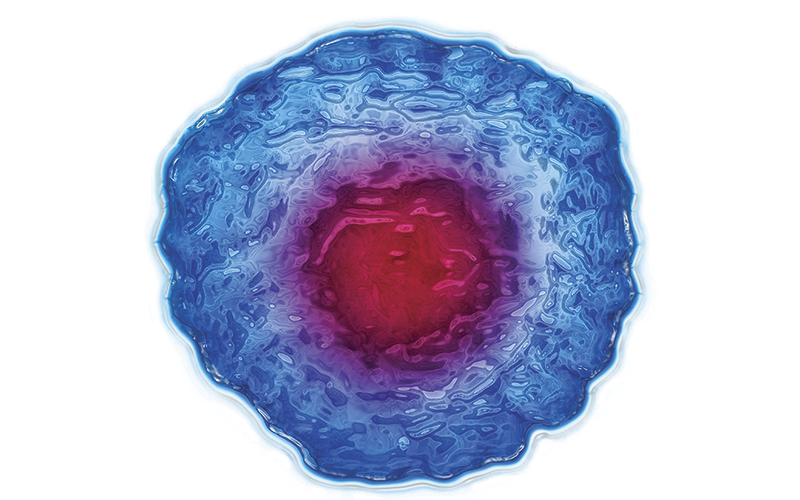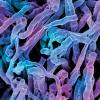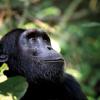Meredith Wadman discusses her new book The Vaccine Race and why she wanted to tell the controversial story of human endeavour.

Along with antibiotics and clean drinking water, I think vaccines are the great public health victory of the 20th century,” says science writer and author Meredith Wadman. “You need only look at morbidity and mortality rates for infectious diseases in the last century and compare them to today’s to be persuaded of this.
“The world would look very, very different, if we did not have vaccines. Here’s one factoid…” Meredith goes on to explain that in the USA in 1958, there were 763,094 cases of measles and 552 deaths. While in 2016 there were 69 cases and the last recorded measles death in the USA was in 2015.
Meredith is talking to The Biomedical Scientist following the publication of her book The Vaccine Race, available now in hardback. Her book tells the story of a major breakthrough in cell biology that led to the creation of some of the world’s most important vaccines.
The strapline printed across the cover of her book (“How scientists used human cells to combat killer viruses”) reads every bit as much the epic Hollywood action-thriller as the historical scientific account. In fact, Kirkus, a respected New York literary review, went as far as to state that the drama and characters “make this a candidate for film adaptation”.
A compelling story
So, what is most important to book – the ground-breaking medical achievements, or the excitement of the unfolding narrative? “They are inextricably related,” says Meredith. “There is a wonderful quote from the French bacteriologist Emile Roux that captures this point. He said, roughly translated: ‘Science appears calm and triumphant when it is completed; but science in the process of being done is only contradiction and torment, hope and disappointment.’”
Meredith says: “What made the story so compelling to me as I researched it was the complexity of the men who were chasing these discoveries: their brilliance and ambition; their generosity and public-mindedness; and their all-too-human flaws: hubris and envy; dishonesty in some cases; and willingness to use powerless people – orphans and intellectually disabled children, for example – in their drive for discoveries and cures.”
To briefly outline the story that Meredith details across more than 400 pages, we begin in June 1962, when Leonard Hayflick, an ambitious young biologist in Philadelphia, USA, used tissue extracted from an aborted fetus from Sweden, to produce the cell line WI-38, which allowed the creation of vaccines against rubella and other common childhood diseases.
Two years later, his colleague developed the vaccine that would one day wipe out home-grown rubella. This vaccine, and others made with those fetal cells, have protected more than 150 million people in the USA alone. The new cells and the method of making them also led to vaccines that have protected billions of people around the world from polio, rabies, chicken pox, measles, hepatitis A, shingles and adenovirus.
Along the way, Hayflick is dogged by controversy; reigned back by “obdurate, ultra-conservative, self-protective regulators”, accused of theft and subsequently cast out into the metaphorical scientific wilderness.
Newly scared
Parallels can be drawn with the oppressive political climate of fear
in which he struggled and Donald Trump’s recent vaccine scepticism. In his presidential campaign he told crowds: “People that work for me, just the other day, two years old, beautiful child went to have the vaccine and came back and a week later, got a tremendous fever, got very, very sick, now is autistic.”
Meredith says: “I don’t think people are so much ‘still scared’ of vaccines
as ‘newly scared’, relatively speaking. This resistance has taken hold because vaccines have done so well at eliminating the diseases they target. So we don’t see children in leg braces from polio, and we don’t (at least in wealthy countries) lose toddlers anymore to measles or pertussis. Complacency sets in, and parents don’t realise it is precisely because we continue to vaccinate that we don’t see these diseases today.”
Meredith stresses that there are risks with vaccines and that no medicine can ever be absolutely without risk. She says that the safety bar has to be “especially high” with vaccines that are put into young otherwise healthy children.
“The trouble is, it’s hard to detect rare problems until a vaccine goes into tens or hundreds of thousands of people. And so, for instance, a problem with the rotavirus vaccine that was first approved in the United States in 1998 did not become evident until it was on the market.”
The vaccine caused an intestinal blockage in an estimated one in 10,000 vaccines. It was withdrawn and ultimately replaced by safer rotavirus vaccines. Meredith adds: “Close surveillance of large populations of people is critical for vaccine safety, especially with newly-introduced vaccines.”
Lift the curtain
As for the audience that her book will reach, Meredith hopes its combination of compelling story and scientific history, will give it a broad appeal. “I hope that all kinds of people will read my book, including scientists, politicians, healthcare providers, historians and students at all levels. But I especially hope that it will be read by ordinary people, even those with no particular interest in science, who love a good story.”
She adds: “As to what it might achieve, I will be happy if it lifts the curtain a bit on the process of science, the importance of vaccines and the ethical shortcuts that were taken 50 and 60 years ago in human trials, so that they don’t happen again.”




